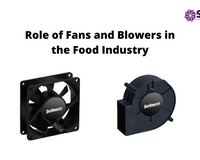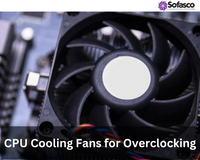In the world of electronics, where components are packed tightly within enclosures, managing heat is paramount. Excessive heat can degrade performance, reduce lifespan, and even cause catastrophic failures. That's where enclosure cooling fans step in. In this comprehensive guide, we'll delve into the significance of enclosure cooling fans in electronics, understanding their role, benefits, selection criteria, installation best practices, real-world applications, future trends, and more.
Electronic components generate heat as they operate due to resistance in circuits and power dissipation. This heat buildup can lead to issues like thermal throttling, decreased efficiency, and component failures. Factors such as high ambient temperatures, poor ventilation, and heavy workload exacerbate the problem, making effective cooling essential.
The Role of Enclosure Cooling Fans
Enclosure cooling fans are instrumental in regulating temperatures within enclosures by facilitating airflow and dissipating heat. By drawing in cooler air from the surroundings and expelling hot air, these fans prevent thermal buildup and maintain optimal operating conditions for electronic components. They come in various types, including axial fans, centrifugal fans, and blowers, each suited to specific applications and airflow requirements.
Types of Enclosure Cooling Fans in Electronics
- Axial Fans: These fans are characterized by their axial airflow direction, where air moves parallel to the shaft of the fan. Our AC/DC/EC Axial fans are commonly used for general-purpose cooling applications where airflow needs to be directed over a large area. They are available in various sizes and configurations, suitable for different enclosure dimensions and airflow requirements.
- Centrifugal Fans: Unlike axial fans, centrifugal fans generate airflow perpendicular to the fan's shaft, creating a more focused and directed airflow. Our AC/DC/EC Centrifugal fans are particularly effective in applications where higher static pressure is required, such as cooling dense electronic assemblies or overcoming airflow resistance within enclosures. They come in different designs, including forward-curved, backward-curved, and radial fans, each offering specific performance characteristics.
- Blowers: Blowers, also known as tangential or cross-flow fans, produce a wide, laminar airflow across the width of the fan. These fans are suitable for applications where space constraints limit the use of traditional axial or centrifugal fans. Our AC and DC Blowers are commonly used in compact electronic devices, where they provide efficient cooling while occupying minimal space within the enclosure.
Benefits of Using Enclosure Cooling Fans
- Enhanced performance
- Improved reliability
- Extended lifespan
- Reduced downtime
- Energy efficiency
Applications of Enclosure Cooling Fans
- Renewable Energy
- Data Centers
- Telecommunications
- Industrial Automation
- Medical Devices
Best Practices for Installing and Maintaining Enclosure Cooling Fans
Proper installation and maintenance are key to maximizing the effectiveness of enclosure cooling fans. This involves strategic placement for optimal airflow, ensuring sufficient ventilation, regular cleaning to prevent dust accumulation, monitoring temperature levels, and timely replacement or upgrades as needed.
Are you ready to optimize the performance and reliability of your electronic systems with effective enclosure cooling solutions? Explore our range of enclosure cooling fans today to find the perfect fit for your application. Whether you need axial fans for general-purpose cooling, centrifugal fans for high-pressure environments, or specialized thermal management units for precise temperature control, we've got you covered. Contact us now to learn more or browse our selection online.












